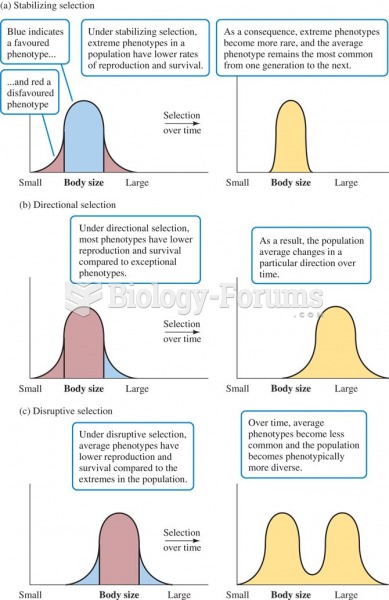|
|
|
In 1844, Charles Goodyear obtained the first patent for a rubber condom.
If you use artificial sweeteners, such as cyclamates, your eyes may be more sensitive to light. Other factors that will make your eyes more sensitive to light include use of antibiotics, oral contraceptives, hypertension medications, diuretics, and antidiabetic medications.
Always store hazardous household chemicals in their original containers out of reach of children. These include bleach, paint, strippers and products containing turpentine, garden chemicals, oven cleaners, fondue fuels, nail polish, and nail polish remover.
There are over 65,000 known species of protozoa. About 10,000 species are parasitic.
As many as 28% of hospitalized patients requiring mechanical ventilators to help them breathe (for more than 48 hours) will develop ventilator-associated pneumonia. Current therapy involves intravenous antibiotics, but new antibiotics that can be inhaled (and more directly treat the infection) are being developed.
 Three principle forms of natural selection: (a) stabilizing selection, (b) directional selection, an
Three principle forms of natural selection: (a) stabilizing selection, (b) directional selection, an
 Variation in the rate of evolution as a function of the strength of selection, assuming genetic drif
Variation in the rate of evolution as a function of the strength of selection, assuming genetic drif





